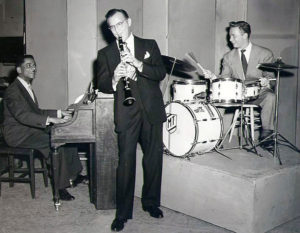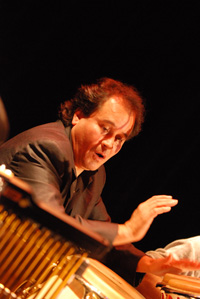Borders, restrictions, divisions, limits, boundaries, barriers, separation, walls — to me, all of these words have such negative undercurrents. Maybe I’m oppositional by nature, but just reading these words arouses some unrest within me. I feel myself bracing, preparing to question, plot and defy. I see this oppositional trait in my children too, and frequently have to remind myself that obedient conformers don’t typically become world changers.
In the arts, coloring outside the lines and challenging convention is celebrated. It’s what makes a work special and leads artists to finding their own unique paths, voices and identities. Artists and creative musicians spend their formative years learning the rules of their disciplines, only to devote the remainder of their careers to challenging, wrestling and deconstructing these practices.
When artists stop questioning, and quit attempting to extend the limits of their boundaries, their work loses impact/significance. Closing themselves to external possibilities and influences leads to stagnation and ultimately, failure. Playing it safe isn’t considered virtuous or a recipe for favorable outcomes. Consider the biblical parable of the talents (Matthew 25:14-30), and look how it turned out for the servant who buried his talent in the ground rather than investing it. (It might not be merely coincidental that “talent” is a word closely associated with artistic pursuits.)
Perhaps society as a whole could learn from the artist mindset. When and how did America lose focus and memory of her story — a triumphant story of impoverished and oppressed groups of people coming from far away lands, seeking to start afresh? How did the United States reach the point of building walls and taking an insular, protective stance in place of welcoming, open arms? Being a land of immigrants, how did extreme patriotism, national populism, and separatist hate creep in, take hold, and become part of America’s defining fabric?
Aside from asking rhetorical questions pointing to faults, it’s important to remember and celebrate the struggles in American history where deep societal divisions and restrictions have been fought and barriers have been cracked and in some cases, crumbled — whether in race, gender, age, or sexual orientation.
 In jazz alone, the integrated trio of Benny Goodman with pianist Teddy Wilson played a significant role in breaking down America’s racial divide and paved the way for musicians of all creeds and cultures to collaborate freely. Likewise, Mary Lou Williams made strides for women in jazz through her example, and Billy Strayhorn’s being openly gay in an era when same-sex relationships were typically concealed, made it easier for others to eventually follow suit.
In jazz alone, the integrated trio of Benny Goodman with pianist Teddy Wilson played a significant role in breaking down America’s racial divide and paved the way for musicians of all creeds and cultures to collaborate freely. Likewise, Mary Lou Williams made strides for women in jazz through her example, and Billy Strayhorn’s being openly gay in an era when same-sex relationships were typically concealed, made it easier for others to eventually follow suit.
For the album in question, we shouldn’t overlook why and how such a diverse group of individuals could come together to collaborate on this recording project. It certainly wasn’t the result of a closed-border mindset or the complacency of those who came before. In all, there were twelve musicians, representing different ages, races/ethnicities, cultures, genders, sexual orientations, incomes, educations, religious beliefs, geographic locations, parental status and marital status. To give some specifics: the band’s ages range from 20 to 62; some of us are straight, and some are gay; three women were involved; two members identify as being Black; one musician is Latino, while one more is the Jewish grandson of a holocaust survivor who escaped to America with his brother. At the helm is a displaced Canadian, trying to find his way and make sense of things.
 Both in and adjacent to music, so many positive outcomes can come through openly collaborating with people from different backgrounds, life experiences, perspectives and skillsets. Several pieces on this album, for example, were originally composed (by this Canadian) as part of collaborative, performance pieces created with two visual artists – one African-American and the other, Russian. If one listens carefully, it is easy to hear the varied contributions of strong individuals on a jazz record. (Ricardo Monzon’s congas and shekere, for example, give a special, needed Latin flavor to the tune, “Dolphy Dance.” Without his contribution, the piece would lack vitality.) In “real life,” by being intentionally engaged in building relationships with our neighbors, mutual appreciation will replace fear, more barriers will be broken as society, and together, humanity will become stronger.
Both in and adjacent to music, so many positive outcomes can come through openly collaborating with people from different backgrounds, life experiences, perspectives and skillsets. Several pieces on this album, for example, were originally composed (by this Canadian) as part of collaborative, performance pieces created with two visual artists – one African-American and the other, Russian. If one listens carefully, it is easy to hear the varied contributions of strong individuals on a jazz record. (Ricardo Monzon’s congas and shekere, for example, give a special, needed Latin flavor to the tune, “Dolphy Dance.” Without his contribution, the piece would lack vitality.) In “real life,” by being intentionally engaged in building relationships with our neighbors, mutual appreciation will replace fear, more barriers will be broken as society, and together, humanity will become stronger.
I’m probably not the right person to make an impassioned, informed commentary on whether or not open borders could work for North America as a whole. However, I do see the value in exploring this idea, whether utopian or not. At the very least, I believe it is important to challenge the notion of closed borders and adopting an immigration policy that cuts off and stifles. If goods and products can flow freely across the arbitrary borders between our nations, why not ideas, music…and people?

